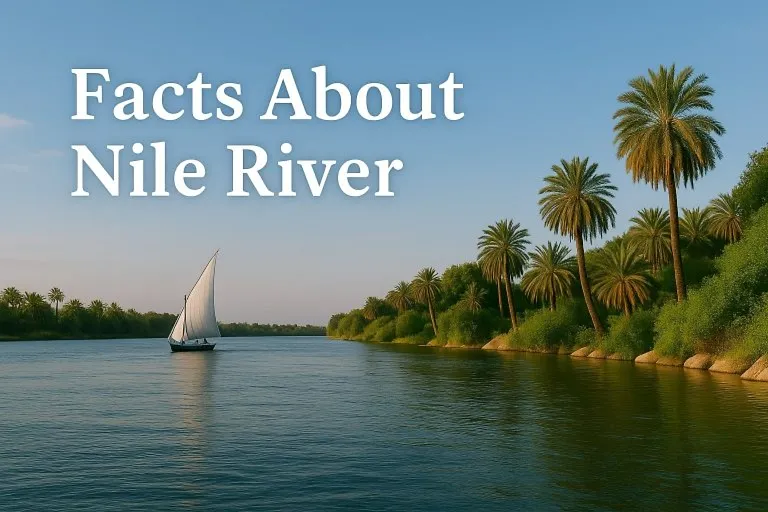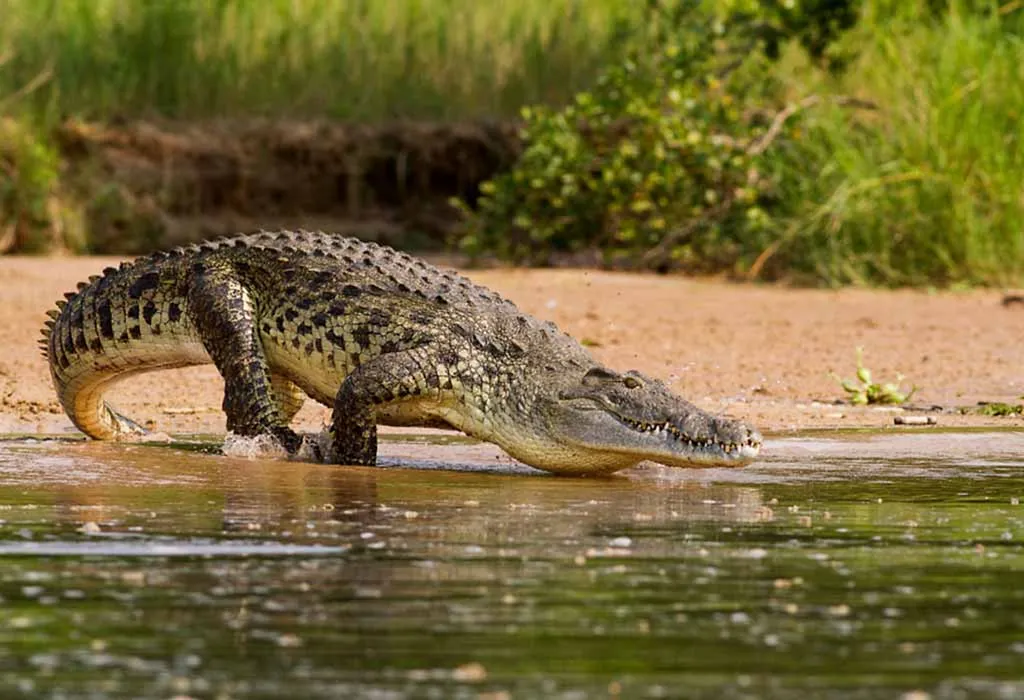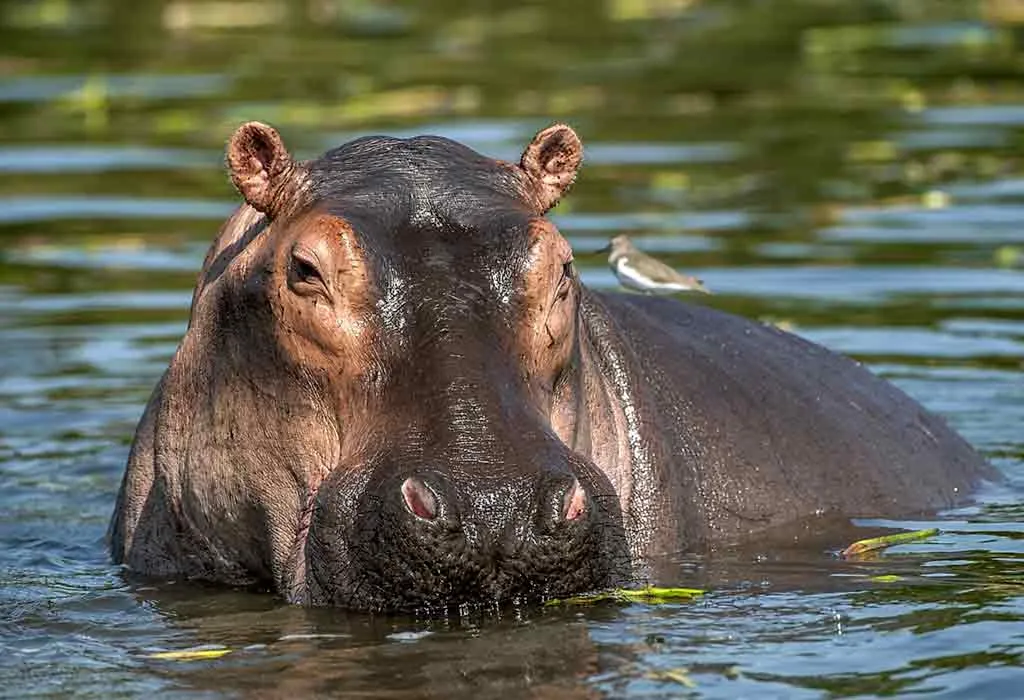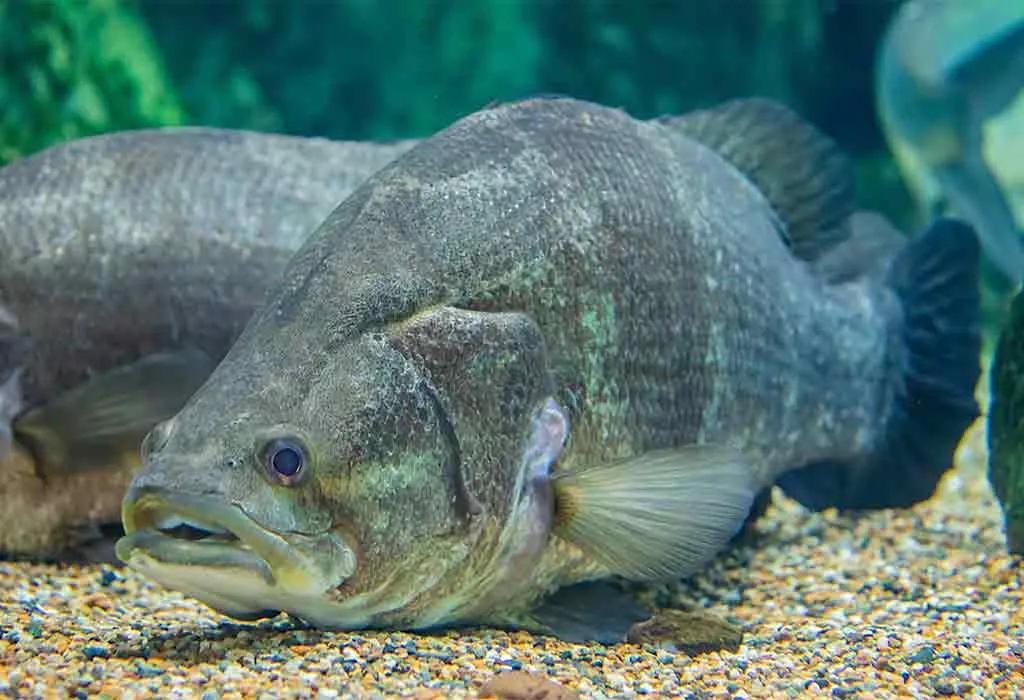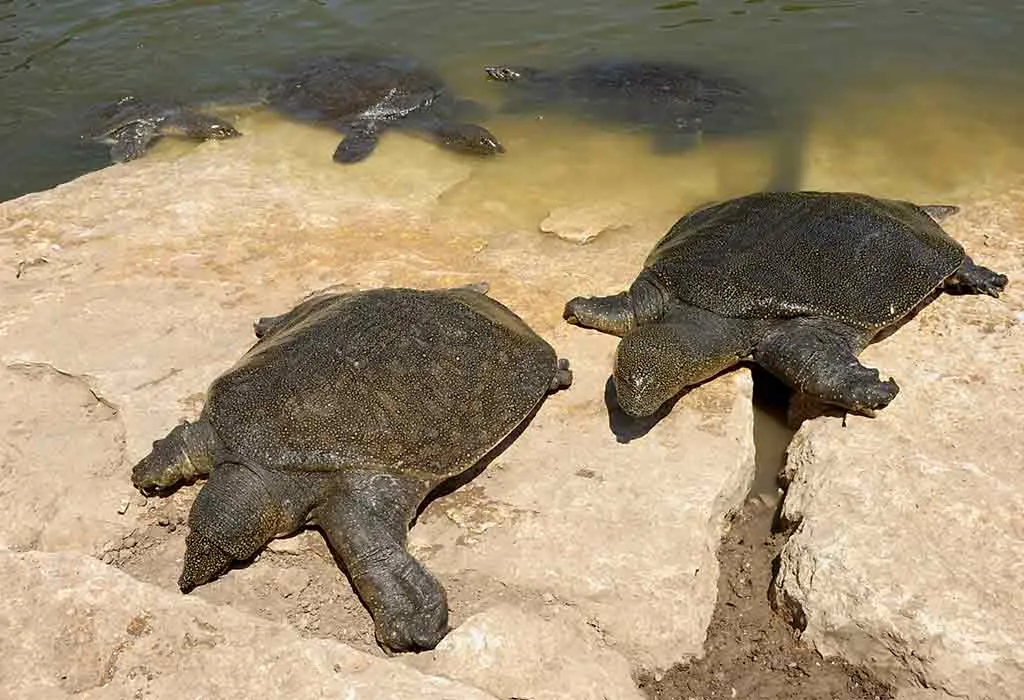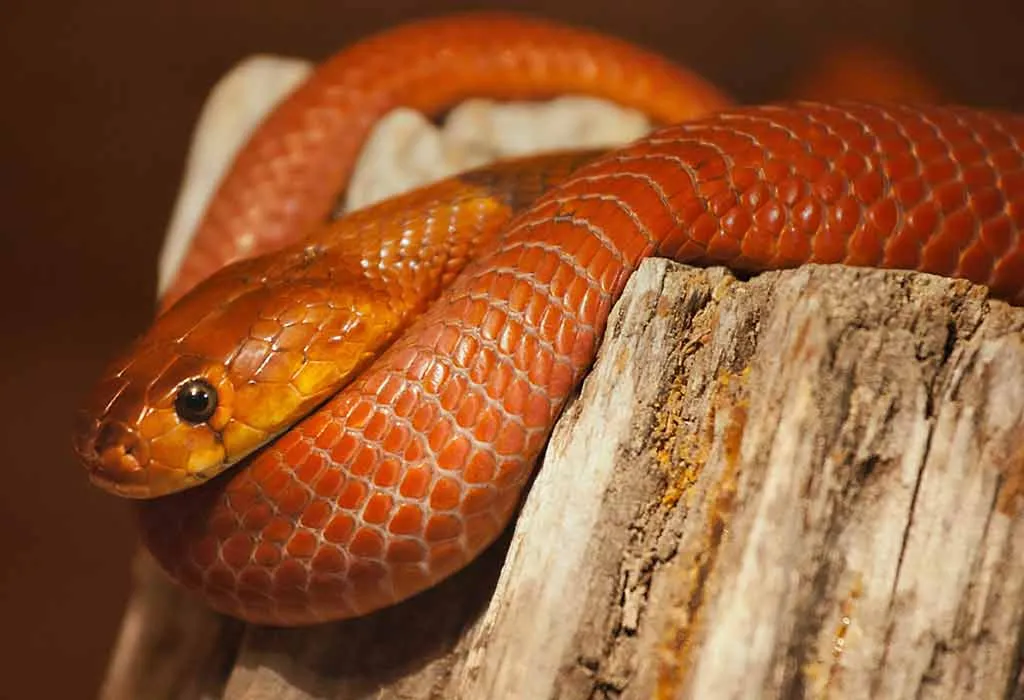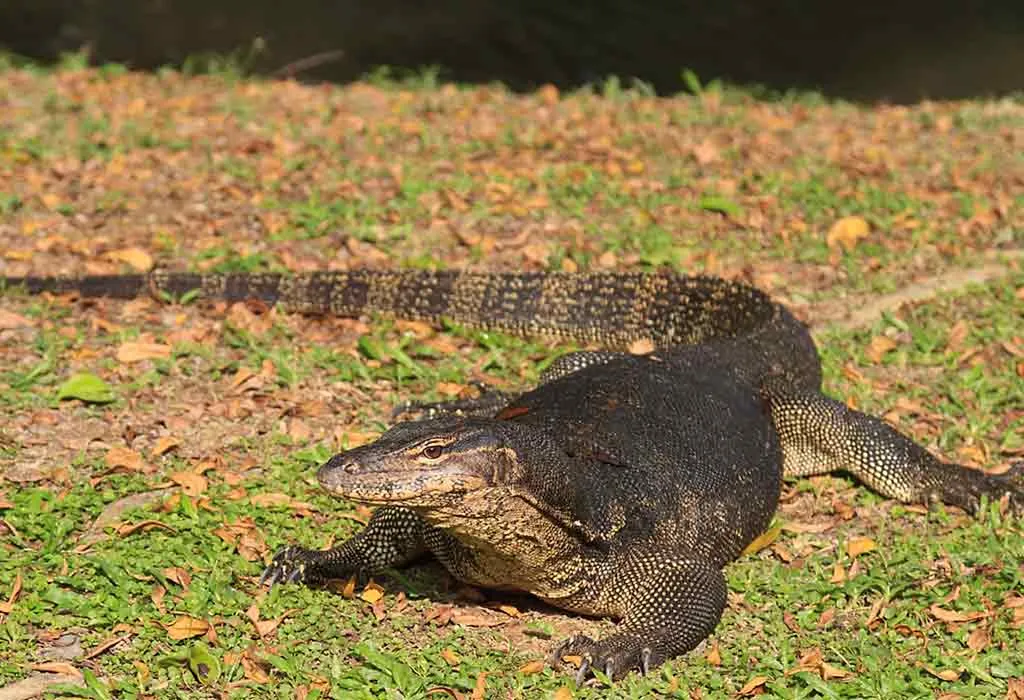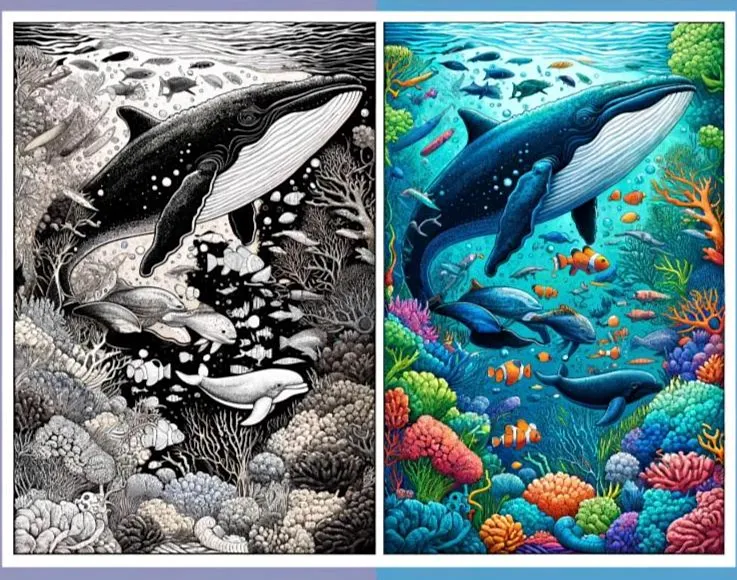Interesting Facts About Nile River for Kids
The Nile is the longest river not only in Africa but in the entire world. Originating from the Greek word ‘Neilos”, Nile means ‘valley.’ Since ancient times, the Nile has been a vital lifeline that breathed life into the arid and parched desert. It nourished its soil, provided water and food resources, served as a crucial transportation and trade route, and continues to do so. What most surprises is that this river runs through 11 countries in Africa, including Egypt, Uganda, Tanzania, Rwanda, Ethiopia, Sudan, Democratic Republic of the Congo, Burundi, South Sudan, Kenya, and Eritrea. Interesting fact, isn’t it? Well, there’s more on Nile River facts for kids. Scroll for more such interesting facts about the Nile River, including its economic, strategic, and social importance, as detailed below.
Which Place Is the River Nile Located in?
Located in northern Africa, the River Nile starts in Burundi. It flows northeast and meanders through eleven countries before eventually emptying into the Mediterranean Sea.
Where Does the Nile Originate From?
The Nile begins in the central part of Africa in Burundi, south of the equator. The river’s source has been a decade-long dispute, as innumerable feeder rivers flow into the vast Lake Victoria. The Kagera River, being the largest of them all, is considered a source apart from the Ruvyironza River of Burundi. It is an upper division of the Kagera River that flows into Lake Victoria.
What Is the Significance of the Nile River to the Ancient Egyptians?
If you’re interested in some historical Nile facts, the mighty pyramids stand the test of time to tell tales of this river’s significance to the ancient Egyptians. The Nile played an essential role in creating and developing the Egyptian civilisation within the desert. Since they believed that the Nile would carry them into the afterlife, it has been revered not only for its physical presence but also for its political and spiritual significance.
The early inhabitants of the Nile valley depended on the Nile’s annual floods to supply moisture for cultivation. Its rich, fertile soil was ideal for growing wheat for making bread items, flax for making clothes, and reeds used to make papyrus, which was utilised for boats for transportation and making paper. The silt deposited by the river served as the raw material for making bricks used in building structures, such as tombs, temples, and shelters.
Apart from drinking water and fishing, the river provided the basic needs of the communities. Pyramids were built close to the Nile, as the granite stone blocks needed to be transported by barge down the Nile from Aswan, which was approximately 900 km away. Other temples and tombs were also built due to the presence of the Nile. The annual calendars of the Egyptians were prepared in relation to the activities of the Nile River. No wonder Egypt was called the ‘gift of the Nile.’
When and Why Did the Nile River Overflow?
The Nile has played an essential role in the natural cycle of events in Egypt. It was fed by the waters of the heavy summer rainfall and snow melting from the Ethiopian mountains of East Africa, which caused flooding. This season of flooding, popularly known as Akhet, meaning inundation, happened between June and September.
Which Animals Live in the River Nile?
While discovering the Nile River facts for kids, we must not forget about the diverse species of animals that call this river their home. Here are some of the most notable aquatic fauna that need special mention:
1. The Nile Crocodile
The Nile crocodile is the second-largest and heaviest reptile in the world. They reach up to six feet and live in the lakes, rivers, and marshlands of large parts of sub-Saharan Africa. These powerful and aggressive predators eat a wide range of fish, birds, reptiles, and mammals.
2. Hippopotamus
A Hippopotamus amphibius is semi-aquatic and is found in the deep water and adjacent reed beds (swampy Al-Sudd region and further south) along the Nile. This herbivorous animal reproduces in water.
3. Perch
This freshwater fish is a popular source of food for many East African nations. The Nile perch can reach a length of up to 2m and weigh up to 200 kg. Insects, crustaceans, small fishes, and zooplankton are its favourite food.
4. Soft-Shelled Turtle
The Nile soft-shelled turtle has an omnivorous diet. Humans hunt it for its delicious meat and eggs.
5. River Snakes
Deadly and non-deadly varieties of snakes, such as the red spitting cobra, vipers of different varieties, the Egyptian banded cobra, and the black mamba, are found in the river. Fish, invertebrates, and amphibians that inhabit the water satiate their hunger.
6. African Tiger Fish
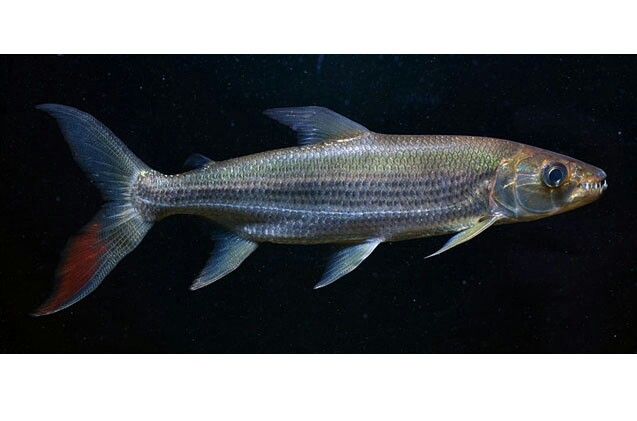
Image Credit: Pinterest
This freshwater fish makes a substantial contribution to the local economy of the Nile Basin by providing a food source and attracting tourists who venture out to the riverbanks for sightseeing and fishing. It has a silvery colour with narrow black strips running horizontally on its body. Its sharp and conical teeth allow it to cut into prey.
7. Monitor Lizards
The Monitor lizards measure up to 120 to 220 cm in length once fully grown. Fish, snakes, birds, frogs, crocodile eggs, carrion, and small mammals are the common prey of Monitor lizards of the Nile basin.
Other Important Facts and Information About the Nile for Children
Want to learn some more Nile River facts? Here is a roundup of some of the cool facts about the Nile River that might stir your curiosity about this water system:
- The Nile River is about 4,160 miles long.
- The Nile discharges water at an average rate of 3.1 litres per second.
- The White Nile and the Blue Nile are two branches of the Nile River.
- The height of the annual Nile floods was once measured by a Nilometer to determine the amount of crop production that year.
- In 1970, the Egyptians constructed the Aswan High Dam to regulate the flooding of the Nile River.
- The Nile god was named Hapi.
- The annual flooding of the Nile was a time of celebration in August for Egyptians, who referred to it as ‘Wafaa an-Nil.’
- The Nile Basin includes parts of Kenya, Congo, Rwanda, Burundi, and Tanzania.
FAQs
1. Why is the Nile River famous?
The Nile is the longest river in the world and has been called the “lifeline of Egypt” because it made farming, travel, and life possible in the desert.
2. How long is the Nile River?
The Nile stretches about 4,135 miles (6,650 kilometres), flowing through 11 countries in Africa before reaching the Mediterranean Sea.
3. Why was the Nile important to ancient Egyptians?
The river provided them with water, food, fertile soil for farming, and a means of transporting goods. Without the Nile, ancient Egyptian civilisation could not have grown.
4. What animals live in the Nile River?
The Nile is home to many animals, like crocodiles, hippos, fish, and lots of birds, making it an exciting habitat for wildlife.
A spectacular journey along the Nile River offers views of panoramic deserts, exotic animals, colourful villages, fertile farmlands, and UNESCO World Heritage Sites that preserve the ancient glory of Africa. So, we’re naturally in awe of this river, which might be a marvellous place to visit. With these facts about the Nile River for kids, you are sure to engage your child in the nature surrounding them and make them more excited about travelling and exploring new places!
Infographic : 10 Facts about Nile River for Kids
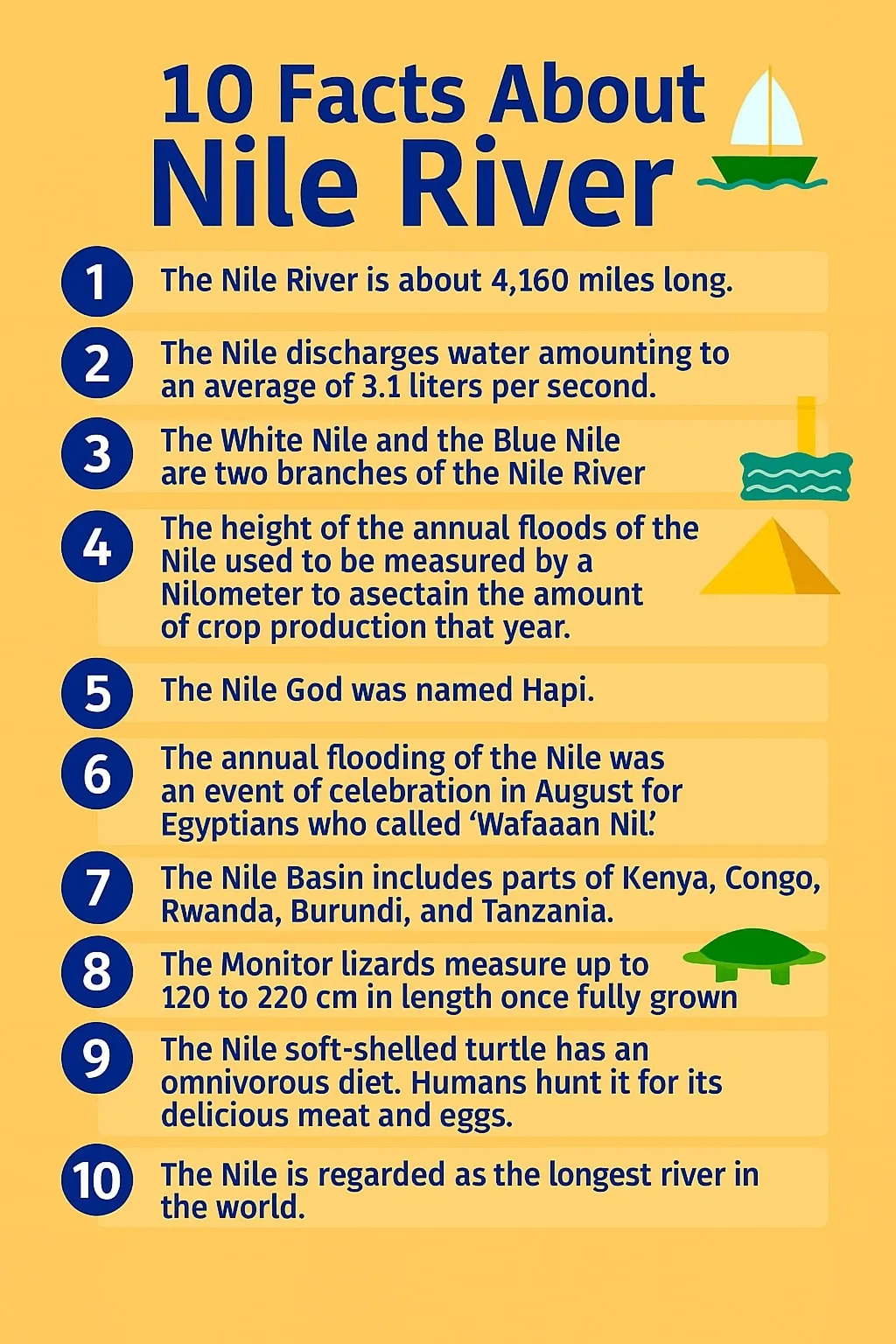
Image Source : AI Generated Image
Also Read:
Shark Facts for Children
Amazon River Facts for Kids
Fish Facts and Information for Kids
Ocean Facts and Information for Kids
Facts and Information about Dolphins
Was This Article Helpful?
Parenting is a huge responsibility, for you as a caregiver, but also for us as a parenting content platform. We understand that and take our responsibility of creating credible content seriously. FirstCry Parenting articles are written and published only after extensive research using factually sound references to deliver quality content that is accurate, validated by experts, and completely reliable. To understand how we go about creating content that is credible, read our editorial policy here.





